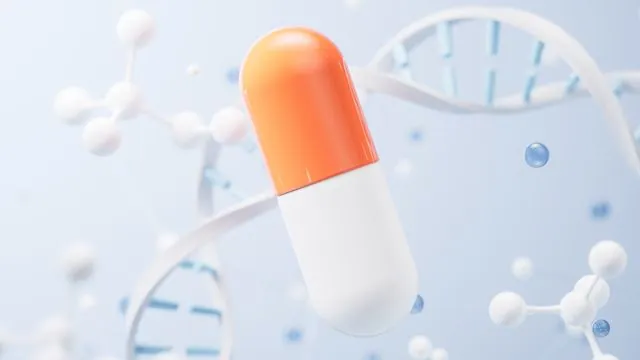
Revolutionary Synthetic Cells Set to Transform Drug Delivery!
2025-09-04
Author: Jia
Unlocking the Future of Targeted Medicine
A groundbreaking technique published in *Nature Chemistry* has the potential to revolutionize drug delivery, making it more precise for treating cancers and bacterial infections while minimizing side effects!
What Are Synthetic Cells?
Synthetic cells are artificial versions of biological cells, featuring a fatty membrane containing DNA and other components. They can produce any necessary protein, but previous methods limited their use in drug delivery due to a lack of control once inside the body.
Breaking Boundaries with Magnetic Technology
Researchers have taken a bold step forward by embedding DNA in tiny magnetic iron oxide nanoparticles. These nanoparticles, encased in a double-layer lipid membrane, can now be controlled using an alternating magnetic field. This innovation activates the synthetic cells just in time to release therapeutic agents.
Harnessing Heat for Precision
When exposed to the magnetic field, the nanoparticles heat their surroundings to activate the DNA, which then produces a glowing protein and a membrane protein to facilitate drug release. The magic lies in the precise control of when medicines are released, paving the way for targeted, effective treatments.
Clinical Implications and Next Steps
This technology could allow doctors to swap out cancer or bacterial-fighting substances into the system smoothly. By controlling the timing of release, treatments can be delivered more accurately, potentially leading to smaller, safer doses.
Dr. Michael Booth from UCL is thrilled about the possibilities this research opens up. He envisions customizable synthetic cells that can sense their environment—like detecting tumors or bacteria—and release medicine precisely when needed. This could radically improve treatment efficacy.
Innovative Solutions to Previous Challenges
Previous attempts to bind DNA to the nanoparticles had issues with leakage. By utilizing a novel approach involving an electric field, the researchers managed to reduce unwanted, loosely bound DNA by a whopping 90%, ensuring only firmly attached strands remain.
Safe and Effective Technology in Action
The heating and magnetic techniques employed are safe for human applications, with parallels drawn to existing therapies for treating glioblastomas—a type of aggressive brain cancer. This foundational work could lead to combining already-approved therapies with cutting-edge technology.
A New Dawn for Cancer Therapies
First author Ellen Parkes of the University of Oxford emphasizes that this groundbreaking work opens the door to repurposing existing treatments in innovative, targeted ways. The future looks bright for developing effective drugs tailored to a variety of cancers, with further research already in the pipeline.
Join the Revolution!
With such transformative potential, the research into synthetic cells is just beginning. Keep an eye on this space—medicine as we know it might be about to change forever!





 Brasil (PT)
Brasil (PT)
 Canada (EN)
Canada (EN)
 Chile (ES)
Chile (ES)
 Česko (CS)
Česko (CS)
 대한민국 (KO)
대한민국 (KO)
 España (ES)
España (ES)
 France (FR)
France (FR)
 Hong Kong (EN)
Hong Kong (EN)
 Italia (IT)
Italia (IT)
 日本 (JA)
日本 (JA)
 Magyarország (HU)
Magyarország (HU)
 Norge (NO)
Norge (NO)
 Polska (PL)
Polska (PL)
 Schweiz (DE)
Schweiz (DE)
 Singapore (EN)
Singapore (EN)
 Sverige (SV)
Sverige (SV)
 Suomi (FI)
Suomi (FI)
 Türkiye (TR)
Türkiye (TR)
 الإمارات العربية المتحدة (AR)
الإمارات العربية المتحدة (AR)